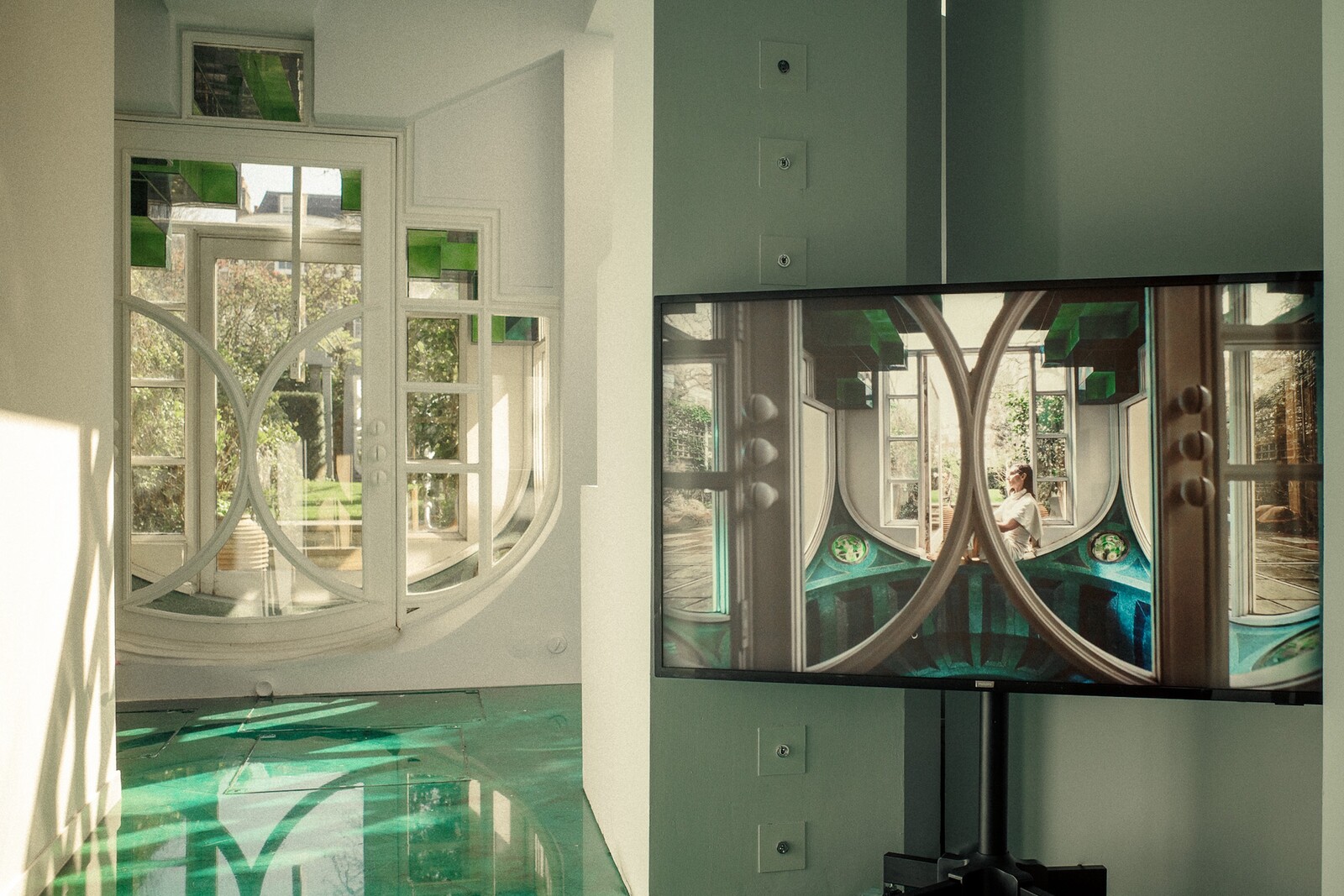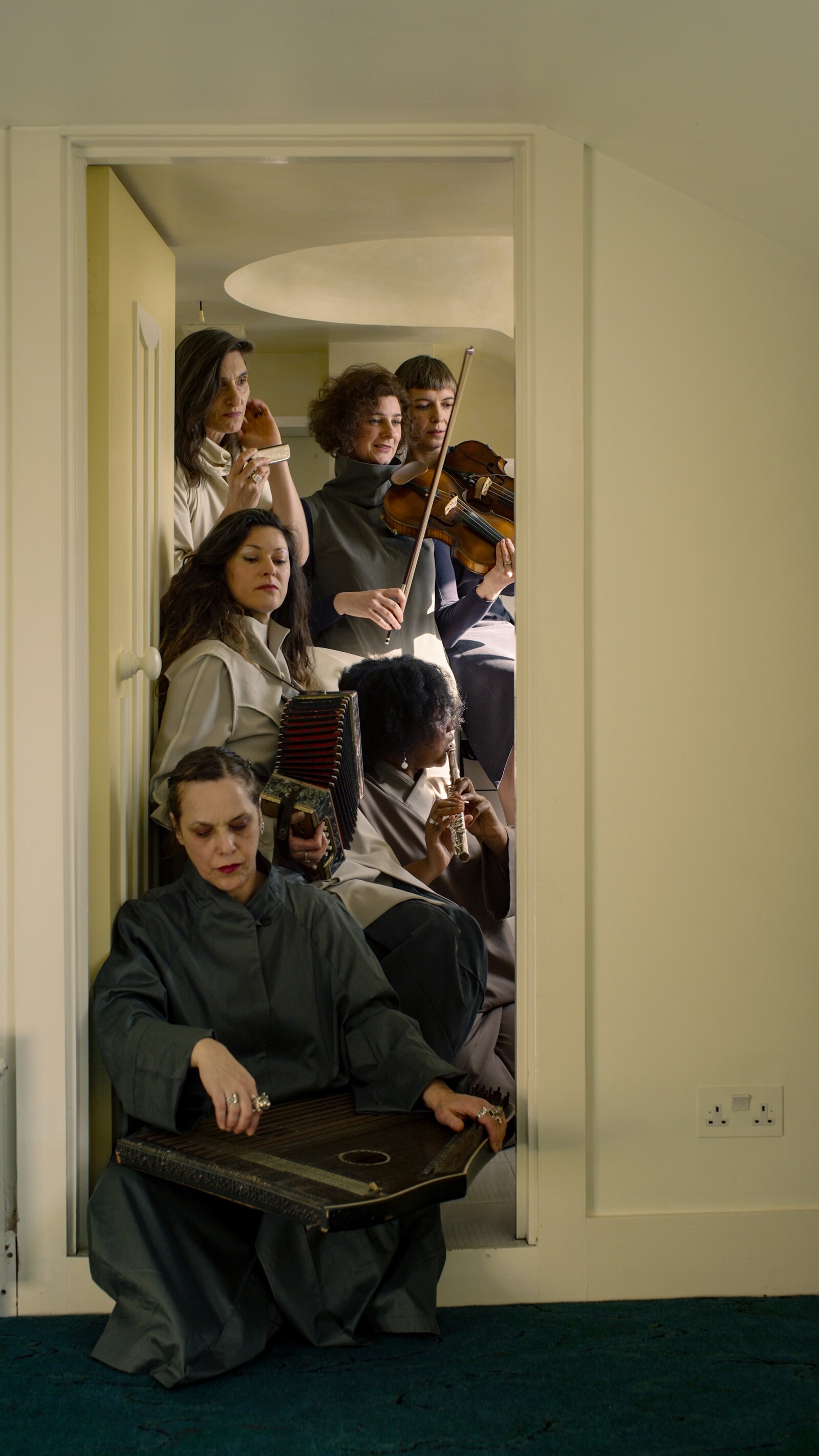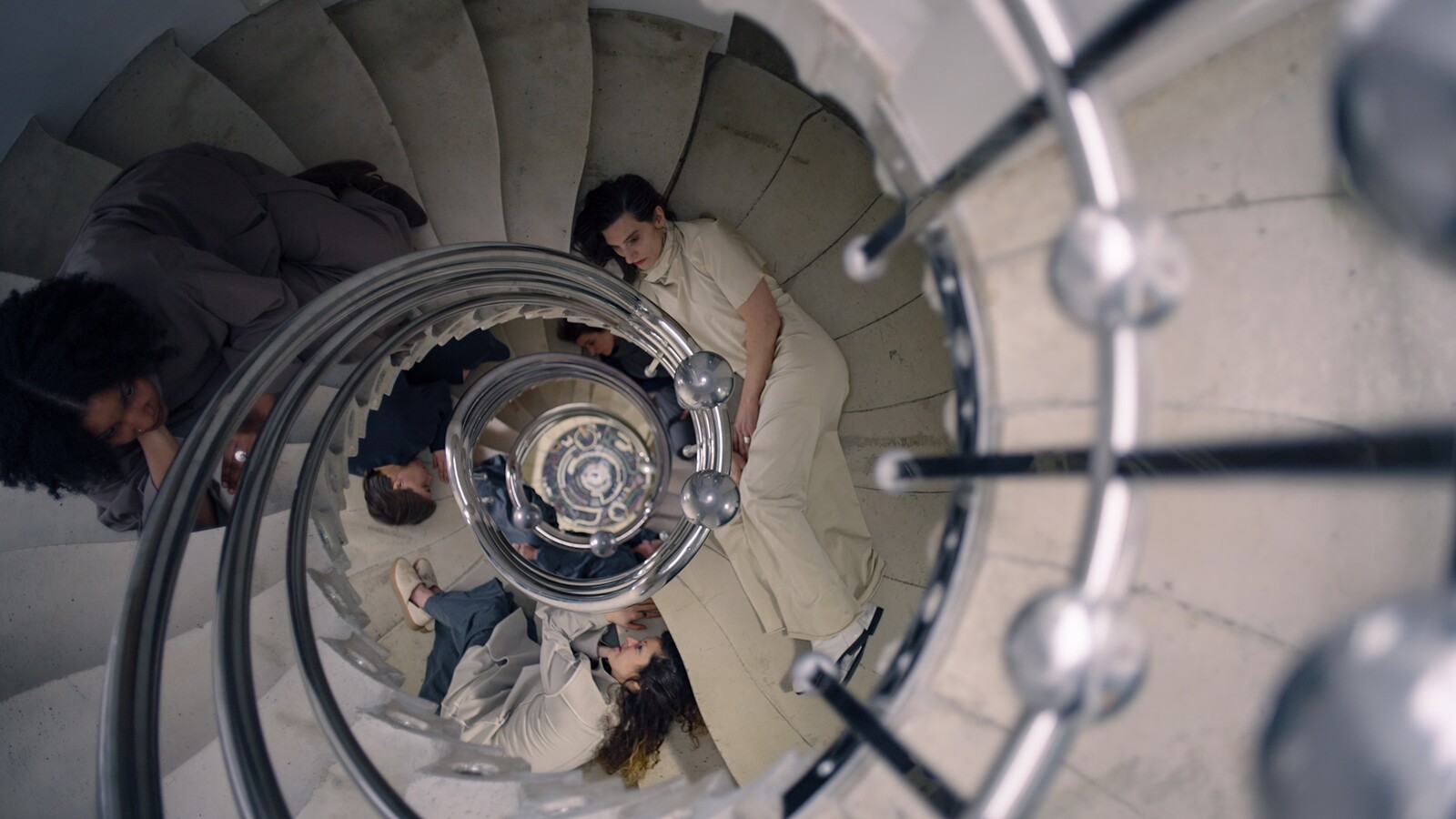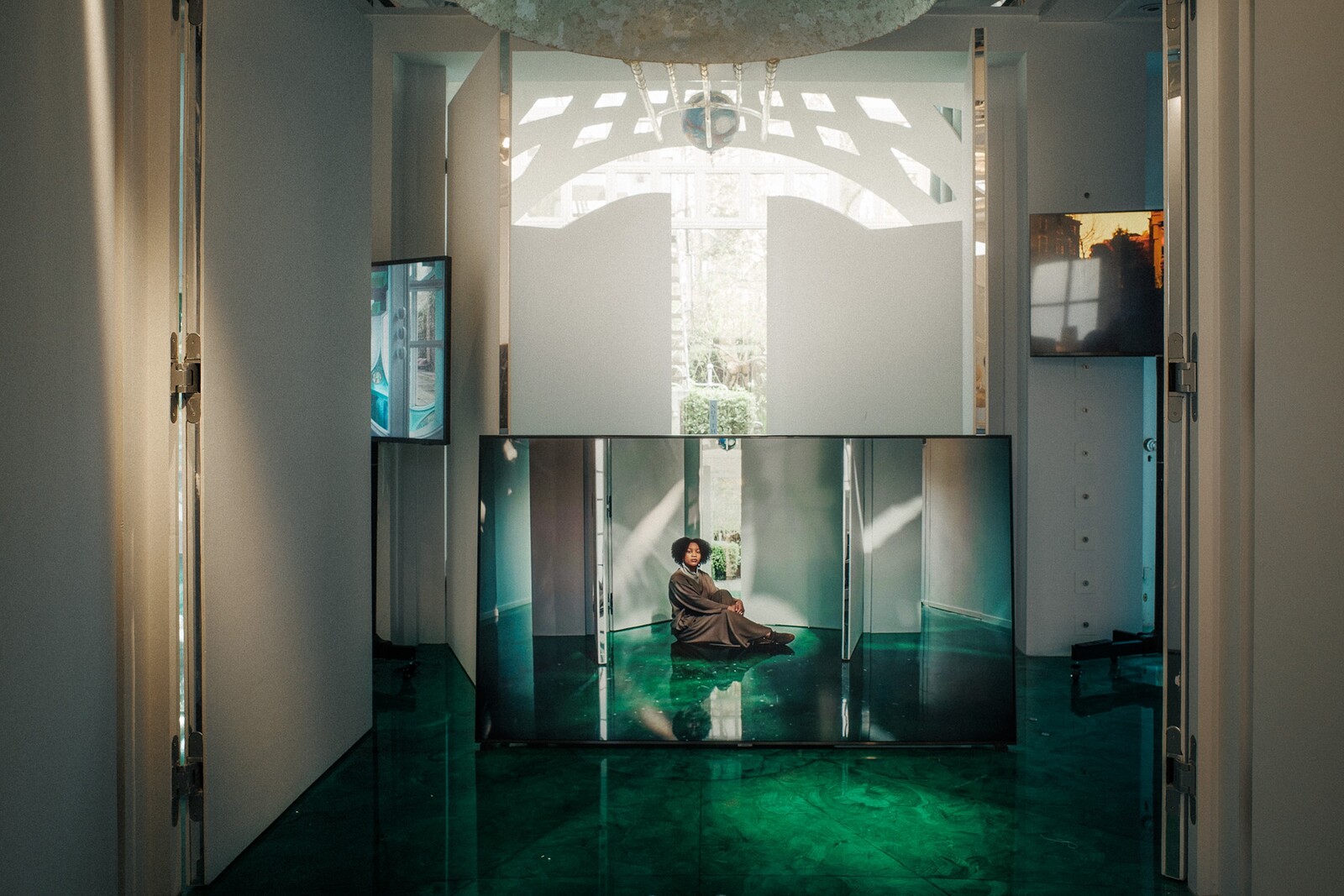The vestibule of The Cosmic House, the postmodernist fantasia realized by Charles Jencks in a West London townhouse, is ringed by William Stok’s frieze of a symposium of thinkers ranging from Imhotep to Hannah Arendt. Such is the colossal immodesty of the architect’s project—a model of all space and time compressed into five floors linked by a helical “sun stair”—that it’s only a surprise Jencks didn’t insist on being painted into the conversation: sharing a joke, perhaps, with John Donne and the Emperor Hirohito.1 This transhistorical vision provides the unlikely inspiration for Lina Lapelytė’s intervention into this family home-cum-cosmological model, realized in collaboration with Nouria Bah, Anat Ben-David, Angharad Davies, Sharon Gal, Rebecca Horrox, and Martynas Norvaišas.
Unlikely because the aesthetic commitments of the architect and artist seem so diametrically opposed. Jencks, who designed his domestic utopia with Maggie Keswick Jencks and Terry Farrell, was an unabashed maximalist for whom irony, syncretism, and pleasurable excess were foundational principles. Lapelytė’s installation, by contrast, is understated, austere, and entirely earnest. It comprises a dozen minimalist musical compositions—filmed in parts of the house ranging from its loo to its library—playing on screens placed discreetly into various nooks and crannies. The visitor finds them by following snatches of music through a labyrinth of rooms decorated according to Jencks’s eccentric symbolic scheme.
The exhibition begins in the basement—a gallery dedicated to the sun and incorporating ornamental references to Apollo, Kazimir Malevich, Jesus Christ, and Louis XIV, among others—with a small screen showing the demurely uniformed artists huddled in a doorway. Together they build a measured and orthodoxly high-modernist cacophony out of dissonant zither strums, accordion squeezes, and harmonica bursts. Like another video of the troupe performing a choreographed ritual in the garden at dusk, the work is simple in its premise, elegant in its execution, and entirely at odds with its surroundings.
This is to the advantage of both the work and its setting. Other songs scattered through the house resemble nursery rhymes, wedding seemingly naïve lyrics to simple melodies. The complex vocal harmony of Mirrors is placed next to a screen in the “moonwell” on which two musicians generate a long drone on their violins. Numbers, in the cramped bedroom designed for Jencks’s son, joins a series of digits to a warm synth line. The repetition implies a pattern—like the Fibonacci sequence, for instance—but if the order constituted a code, then its meaning escaped me. Jencks once rejected a fireplace commissioned from Rem Koolhaas for the house for being insufficiently symbolic; you wonder what he would have made of Lapelytė’s work, which so resists grand narratives and gestures.
Where Jencks built an architecture that incorporates the bodies moving through it into a universal symbolic system, Lapelytė’s metaphysics has its foundation in the body and its measure in the breath. One screen tucked away in a bathroom near the entrance shows the artist, framed in a mirror and playing an accordion. She is joined by her collaborators, multiplied by the mirrors lining one of the house’s light wells, and in harmony they sing “in and out of time / the breath of six people.”2 Here solace is to be found not in the security of an encompassing infrastructure—a reassuring cosmic order, in which everything has a meaning—but in the fleeting society of voices joined in song. The music of the spheres against that produced by fragile bodies.
Nursery rhymes from “Ring a Ring o’ Roses” to “London Bridge is Falling Down” are, after all, attempts to impose order on a frighteningly unpredictable world. As structures offering refuge from chaos, they might share something with a family home (Jencks lived here until his death in 2019) that is also a carefully controlled symbolic system.3 In which case, The Cosmic House is recast as something more than a brilliantly irreverent—in today’s climate, arguably irresponsible—series of appropriations in the service of his own whimsical scheme. Rather, it appears like a last redoubt against the collapse of western civilization’s master narrative, a collection of fragments shored up against the encroaching ruin.
To see The Cosmic House not as an expression of unbound intellectual jouissance but as an anxious attempt to conserve what is under threat is, of course, to see it in the light of our parlous present. But this is the triumph of Lapelytė’s intervention, which recasts Jencks’s monument to aesthetic adventure and the free exchange of ideas as the final flickering of a dying tradition. With its emphasis on intimacy and collaboration, as well as its return to classical modes and ritual performance, “In The Dark, We Play” suggests one possible way through the gathering night.
“Modesty,” writes Jencks in a characteristically idiosyncratic interview with himself in the introductory booklet to The Cosmic House, “has never been an architectural virtue.”
The lyrics of this song, like several others, derive from an essay written by Ella Finer in response to Stok’s imitation fresco.
When Maggie Keswick Jencks was diagnosed with cancer, she spent the time before her death in 1995 designing the blueprints for a care centre in Edinburgh. There are now twenty-seven Maggie’s Cancer Centres around the world, housed in buildings designed by architects including Frank Gehry, Zaha Hadid, Rem Koolhaas, and Richard Rogers.




